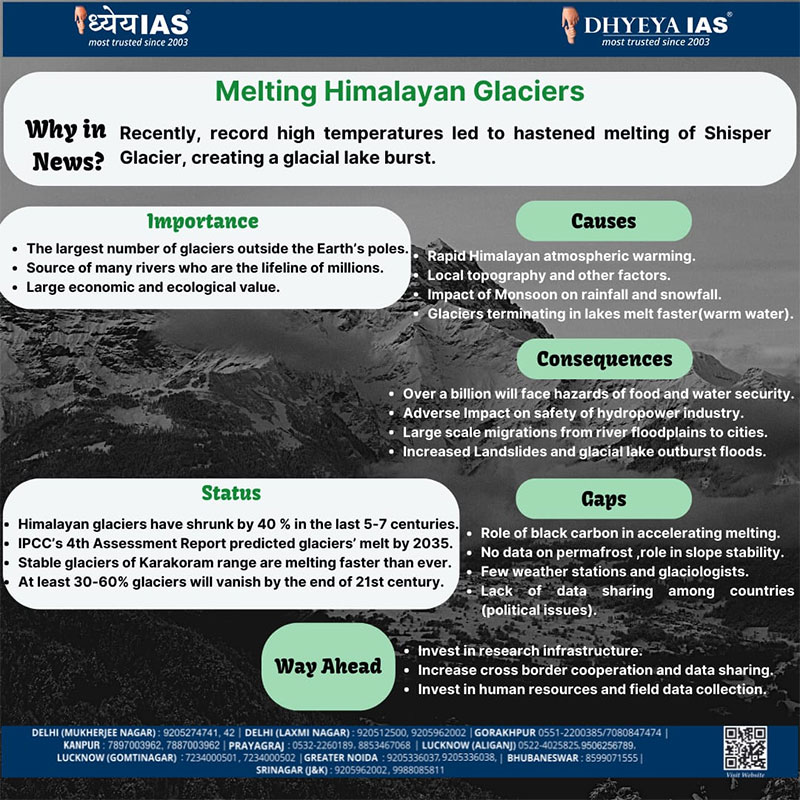Info-paedia : Melting Himalayan Glaciers
Why in News?
- Recently, record high temperatures led to hastened melting of Shisper
Glacier, creating a glacial lake burst.
Importance
- The largest number of glaciers outside the Earth’s poles.
- Source of many rivers who are the lifeline of millions.
- Large economic and ecological value.
Status
- Himalayan glaciers have shrunk by 40 % in the last 5-7 centuries.
- IPCC’s 4th Assessment Report predicted glaciers’ melt by 2035.
- Stable glaciers of Karakoram Range are melting faster than ever.
- At least 30-60% glaciers will vanish by the end of 21st century.
Causes
- Rapid Himalayan atmospheric warming.
- Local topography and other factors.
- Impact of Monsoon on rainfall and snowfall.
- Glaciers terminating in lakes melt faster (warm water).
Consequences
- Over a billion will face hazards of food and water security.
- Adverse Impact on safety of hydropower industry.
- Large scale migrations from river floodplains to cities.
- Increased Landslides and glacial lake outburst floods.
Gaps
- Role of black carbon in accelerating melting.
- No data on permafrost, role in slope stability.
- Few weather stations and glaciologists.
- Lack of data sharing among countries (political issues).
Way Ahead
- Invest in research infrastructure.
- Increase cross border cooperation and data sharing.
- Invest in human resources and field data collection.

